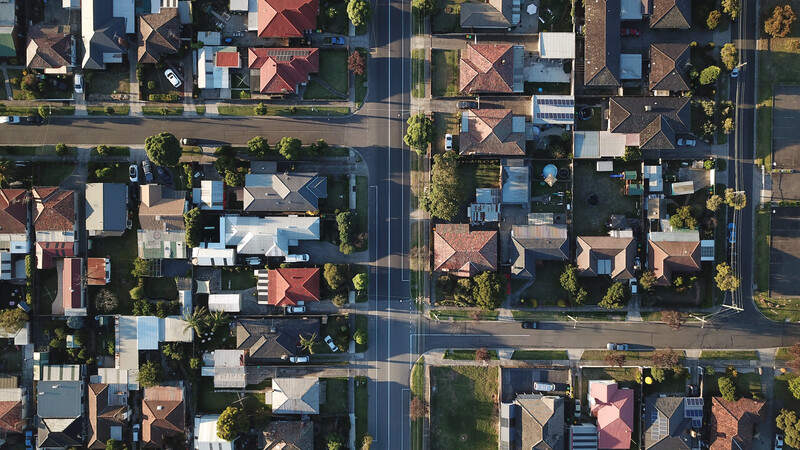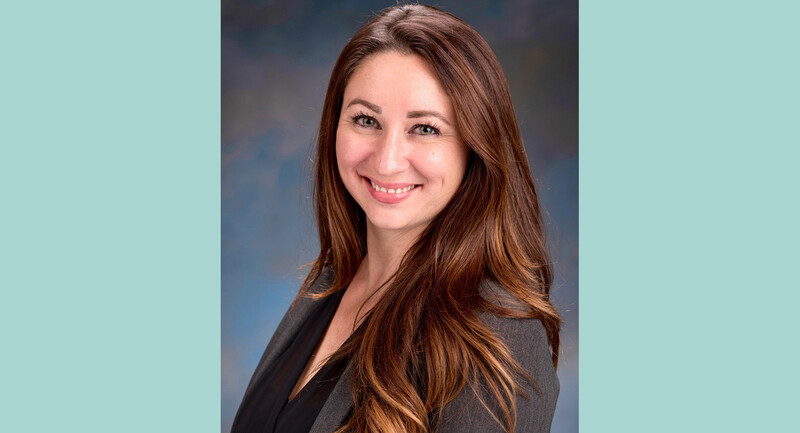Sixty-five years ago, the Brown v. Board of Education ruling promised an integrated and equitable American society—but are we any closer to this ideal today? A decade and a half after the groundbreaking ruling, a major presidential commission reported that the American people were not moving toward racial integration but were in fact splintering into two clear societies—one white and one black (Kerner Commission, 1968). In the following decades, these findings seemed to be confirmed, as we saw clear lines of segregation developing across the urban landscape. Our large cities were predominantly black, while our suburbs were overwhelmingly white.
In recent decades, however, a shift has begun to transform our notions of race and place in America. After generations of white migration to the suburbs, we are beginning to see an influx of young whites moving back into urban centers. Meanwhile, more and more minority groups are residing in the suburbs. This shift across once stark geographic and racial boundaries is creating unique opportunities for moving toward that ideal society many envisioned after Brown v. Board of Education. However, with these changes come profound challenges that threaten to deepen segregation across our neighborhoods and schools. Educators are in a unique position to help create the Brown vision of an equitable society. But to do so, they must think carefully about these shifting demographics and housing markets and their role in shaping the racial landscape of education.
A Demographic Shift
By the year 2045, demographers project that the United States will become a minority-majority nation—a country where those currently categorized as racial minorities will comprise the majority of the populace (Frey, 2018). But that day is already here for the nation's youngest children, particularly in America's largest metropolitan centers (see Figure 1). Across the nation, the most common age for whites is 55; whereas for Latinos, by far the largest minority group, the most common age is 8 (Gao, 2016). This means that many school districts nationwide, especially at the elementary level, are at the forefront of America's rapid racial transformation. A quarter-century ago, 7 out of 10 school-aged children were white—but today, that number is less than 1 out of 2.
Figure 1. 25 Largest Metros: Minority Population by Age, 2016
Note: Minority includes all racial and ethnic groups except single-race, non-Hispanic whites.Source: Author's calculations using the 2016 American Community Survey microdata (U.S. Census Bureau, 2016).
As a byproduct of this demographic shift, more students are also living in poverty and in segregated neighborhoods, particularly Latino students (Gándara & Mordechay, 2017). Since 1990, the 5- to 17-year-old Latino population has more than doubled, increasing from 5.3 million to more than 12.8 million, making up almost a quarter of the school-aged demographic (Mordechay & Orfield, 2017). As the largest "minority" group in the U.S., Latinos' academic attainment is a significant concern for the nation as a whole, and even more so for regions like California, where Latinos represent an absolute majority of all students. Latinos are the least likely of all subgroups to attain a college degree, by a very large margin: 16.4 percent of Latinos ages 25 and older versus 55.9 percent of Asians and 37.3 percent of whites (NCES, 2017). The reasons for this are closely linked to the fact that many Latinos suffer from triple segregation—by poverty, race, and language (Gándara & Aldana, 2014).
Black students are also facing these problems; despite a large-scale movement of African Americans to the suburbs in many parts of the country, economic and racial school segregation for black students remains very high. Nationwide, the typical black student is now in a school where more than two out of every three classmates (68 percent) are low-income (Orfield et al., 2016). For decades, scholars have documented the high levels of poverty in majority-minority schools, arguing that residential segregation concentrates minority students in high-poverty schools, which tend to have fewer resources and lower academic achievement (Farley & Tauber, 1968; Logan & Zhang, 2011). The challenge remains: What can educators do about these inequities?
Housing Segregation: Holding Back the Promise of Brown
By and large, America's public schools look like America's neighborhoods. A child goes to school in the neighborhood in which he or she lives, especially at the elementary level, because of the localized nature of school-catchment zones. Thus, the compositions of public schools are strongly linked to individual housing choices—so much so that public school reputations are directly influencing the valuation of local housing markets.
These reputations are often informed by school ratings, which generally reflect the racial and socioeconomic makeup of a school. Schools with poor students or majority-minority student populations tend to have lower test scores, which heavily influence their ratings. High-poverty, racially segregated schools such as these are often signals to prospective homebuyers and renters that the local schools are "bad" for their children. This creates a cycle where families with resources avoid buying homes in neighborhoods with low-scoring schools, perpetuating residential and school segregation.
Another important trend affecting demographics is that Millennials, the largest and most racially diverse generation in American history, have been driving the move "back to the city." However, while metro migrations may imply that urban areas are becoming more diverse, neighborhoods often quickly resegregate in one direction or another. This happens through a process of "pass-through" diversity, in which communities become diverse at the forefront of suburban and urban change, followed by a process of resegregation (Wells, 2015).
Since Millennials have only recently begun to have children, it is unclear what will happen when their children become school-aged (Mordechay & Ayscue, 2017). Will Millennial parents settle in suburbia as their Boomer parents did, in search of better schools, or, if offered better schooling options, will they stay in the cities to raise their children? These metropolitan shifts may provide a new chance to integrate our schools, but it will require an innovative approach. School leaders must begin to think in very a different way about the role diversity plays in defining "good schools."
What School Leaders Can Do
Many students of color suffer from a vicious cycle of segregation that is created when antiquated school rating systems and deeply entrenched housing patterns negatively shape perceptions of schools.
A quick Zillow or Trulia search is often the first step taken by potential buyers, renters, and realtors to understand a certain neighborhood. These online real estate websites offer a numerical evaluation of schools in a targeted zip code. GreatSchools.org, another popular resource for parents, provides a 1–10 rating and labels schools with a 1–3 as "below average," a 4–7 as "average," and an 8–10 as "above average." In most states, these ratings are based only on standardized test scores, relative to other schools in the state (Dalton, 2017). As test scores are often linked to the racial and socioeconomic makeup of a school, families with means will often choose to live in neighborhoods zoned to schools with high test scores. Therefore, these consumer-oriented ratings work to create and reinforce reputations of "good" and "bad" schools, perpetuating the residential/school segregation feedback loop. But education leaders do not necessarily have to sit back and watch as housing choices and faulty rating systems continue to be a factor in segregating schools. School leaders can and must work with housing and community development organizations, as well as realtors, to change some of the long-held narratives about local schools (Mordechay & Ayscue, 2018).
In recent years, for example, school leaders in Pasadena Unified School District (PUSD) in Southern California have recognized a critical "perception gap" between the good work happening in PUSD schools and the negative narratives that have long been perpetuated by the real estate community. In response, the district launched an innovative realtor outreach program, inviting realtors to lunches with the superintendent to engage in conversation about the schools and sending them a monthly newsletter with current stories about schools and students, links to school profiles, and school tour schedules—important, useful information that realtors can pass directly to their clients (Miyake-Trapp, 2018).
In addition to providing information directly to real estate agents, school districts can also partner with housing developers on more long-term planning. As the cost of housing in many of the nation's metropolitan areas becomes increasingly unattainable to most people, separation along race and class lines intensifies. However, building affordable housing units while at the same time creating a new school in the area could have long-term benefits for both the housing developers and the school. The new development would create a stable base of incoming students, while the success of the school could potentially increase the value of the units, enticing home buyers to purchase market-rate units in the mixed-income development. This strategy could be particularly effective in neighborhoods on the edge of gentrification.
Further, community development organizations and elected officials can work with schools to develop workforce housing for teachers. This would enable school staff to live in the communities they serve, which is especially important in high-priced cities where many schools suffer from a teacher shortage. In San Francisco, the Mayor's Office of Housing and Community Development recently developed a pilot program for the construction of affordable teacher housing. San José Unified School District is currently proposing a similar plan. These programs serve to provide much-needed housing relief to current teachers, while also attracting much-needed new teachers. Recruiting and retaining a teacher workforce is key to improving outcomes for all students, particularly for students from low-income families and other underserved groups whose schools have high rates of teacher turnover.
Working with community development organizations to improve the surrounding community can also help schools attract families and qualified teachers to a neighborhood. These collaborations can be as simple as launching a neighborhood bike-sharing program or building a community garden. Improving schools and the surrounding community can be a particularly effective strategy to support the development of mixed-income housing units, as these efforts make neighborhoods more attractive to everybody. Educators should also work closely with community organizations to create neighborhood service-learning opportunities and afterschool programs which could be mutually beneficial.
In-School Efforts
The populations of urban neighborhoods are always changing, yet local schools do not often reflect these changes. Even as many of the nation's urban and suburban communities have become more diverse, their schools have not. Local public schools can work to appeal to new and old residents alike by being more in touch with their needs. School leaders can host forums and focus groups to ask families what they are looking for in a school. This kind of community-driven effort would allow the school to be modeled according to the tastes of the neighborhood, making it more attractive to prospective families. Such efforts could include innovative afterschool programs and high-end extracurriculars. For this process to be equitable and effective, it should give all participants an equal voice and be planned with economic and racial diversity as a primary goal.
School leaders can also take into consideration the ways that having a diverse student population can enhance students' learning experiences. Bilingualism and multiculturalism, for example, are advantages that Latinos bring that are valued by the U.S. labor market (Callahan & Gándara, 2014), and English-speaking families are increasingly seeking access to dual-language programs that incorporate these Spanish-speaking students as language models for their children. Many parents of all races are willing to enroll their children in schools that provide these dual-language programs, so adding these offerings could help to attract a more diverse populace and begin to desegregate schools.
Embracing Diversity and Change
American society is in the midst of profound demographic changes, and our younger generations are the most diverse generations that we have ever seen. As our diversity grows, a return toward the vision of Brown becomes more imperative. We need to create schools that will build a society where the talent and assets of all are developed, and students of all races, ethnicities, and social classes receive an equitable education. This can only be achieved by reconceptualizing our ideas of race and place in America and creating integrated communities where all have access to opportunity-rich schools.









